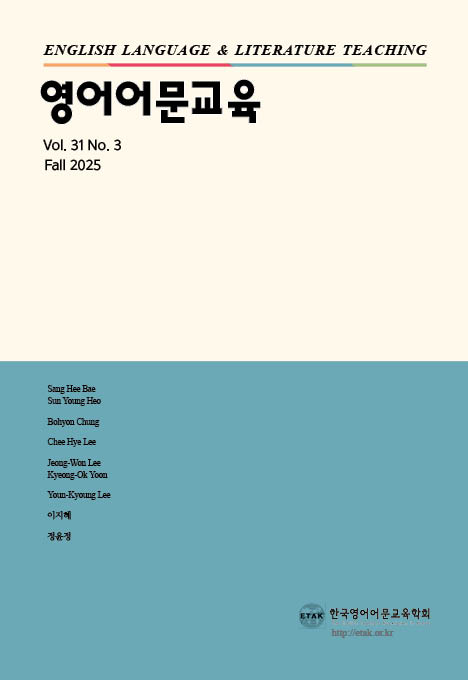영어의 대시와 한국어의 줄표의 문법적·문체적 기능 비교 연구
A comparative study of the grammatical and stylistic functions of the English dash and the Korean julpyo
- 한국영어어문교육학회
- 영어어문교육
- 제31권 제3호
-
2025.09105 - 122 (18 pages)
-
DOI : 10.35828/etak.2025.31.3.105
- 31

This study aims to examine and compare the grammatical and stylistic functions of the em dash in English and the julpyo(―) in Korean. The analysis focuses on academic article (English) and Korean Language’s official guidelines on Korean punctuation (Korean) for grammatical functions and on literary essays (English) and composed examples reflecting the tone and structure of Korean columns (Korean) for stylistic functions. Three subcategories were examined for each function: insertion, parallelism, apposition and elaboration for grammatical function; emphasis, transition, and reader engagement for stylistic function. The findings reveal that despite their visual similarity, they exhibit different functional patterns depending on the stylistic structure and discourse conventions of each language. The English dash is used to clarify logical relationship and assert authorial stance whereas the Korean julpyo serves to guide the flow of discourse and reflect contextual or emotional nuances. These contrasts reflect broader syntactic, discourse and cultural differences between the two languages. This study contributes to punctuation research by providing a comparative, function-based analysis grounded in authentic discourse data, extending beyond formal approaches. The findings are expected to inform both English and Korean language education, offering pedagogical insights into how learners can develop a more nuanced awareness of punctuation practices.
Ⅰ. 서론
Ⅱ. 이론적 배경
Ⅲ. 연구 분석 자료 및 방법
Ⅳ. 영어 대시와 한국어 줄표의 문법적, 문체적 기능 분석
Ⅴ. 결론
참고문헌
(0)
(0)